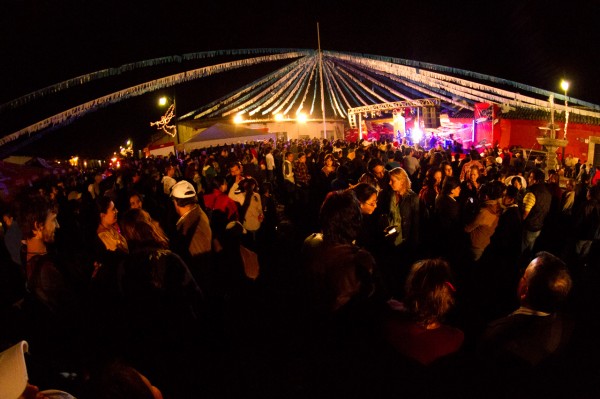The Devil Gets His Due
All year long he hides under the bed or in the junk piled up in the corner, casting misfortune or worse on helpless mortals. But on Wednesday, December 7, at 6 p.m. sharp, the Devil gets his comeuppance, as he is tossed out of the house along with the trash and set ablaze in the Quema del Diablo (Burning of the Devil), a tradition in many Guatemalan towns that literally sparks the beginning of the Christmas Season.
The origins of the Quema del Diablo in Guatemala can be traced to colonial times, when the well-to-do adorned the fronts of their homes with elaborate lanterns on the eve of the Feast of the Immaculate Conception, explains historian Miguel Álvarez Arévalo. Unable to afford lanterns, poor denizens instead lit bonfires made of kindling and the trash from their homes. The practice over time evolved into the Quema del Diablo.
How the Devil entered the picture is the subject of some debate, according to eminent historian Celso A. Lara Figueroa. One account claims that the sermons of priests describing how the Virgin of the Immaculate Conception squashed the head of the Devil established the link. What is clear, however, is that the fires, viewed in many cultures as having a purifying effect, came to symbolize the triumph of Good over Evil.
Today, the Quema del Diablo is practiced mainly in the central zone of the country, including Guatemala City and La Antigua Guatemala. The tradition is particularly popular with children, who delight in lighting the bonfires and setting off firecrackers. In La Antigua crowds gather at the Barrio de la Concepción, right next to the fountain, to watch the lighting of a large effigy of the Devil and enjoy music in a community-sponsored celebration.
But not everyone cheers the Quema del Diablo, which in recent years has come under fire from environmentalists who object to the resulting air pollution and burning toxic materials. Authorities now advise against burning plastics, tires or flammable materials and to take special precaution for children whenever using fire or fireworks.
While acknowledging the need to adjust the Quema del Diablo to modern realities and speaking favorably of innovations such as the burning of a piñata of the Devil, Lara defends the deeply-rooted tradition as one that helps forge a national identity. “No one,” he says, “can claim to have the right to put an end to traditions that are the product of the historical and cultural process of a country.”
written by Juan Carlos Ordóñez
